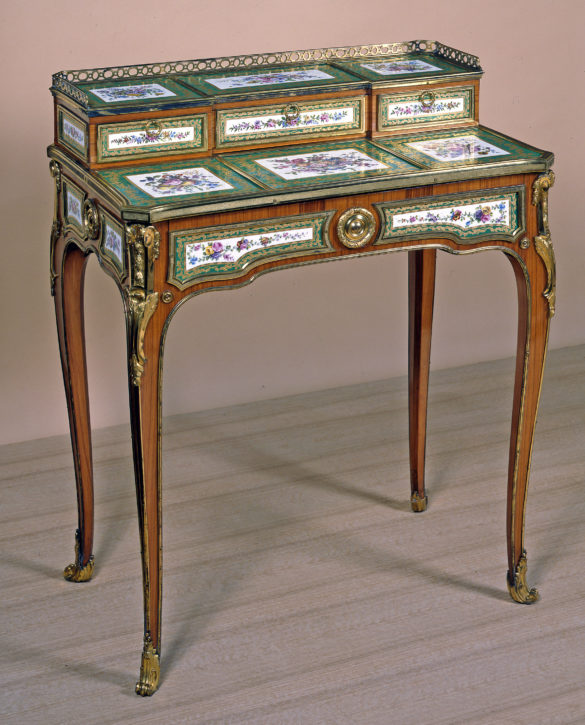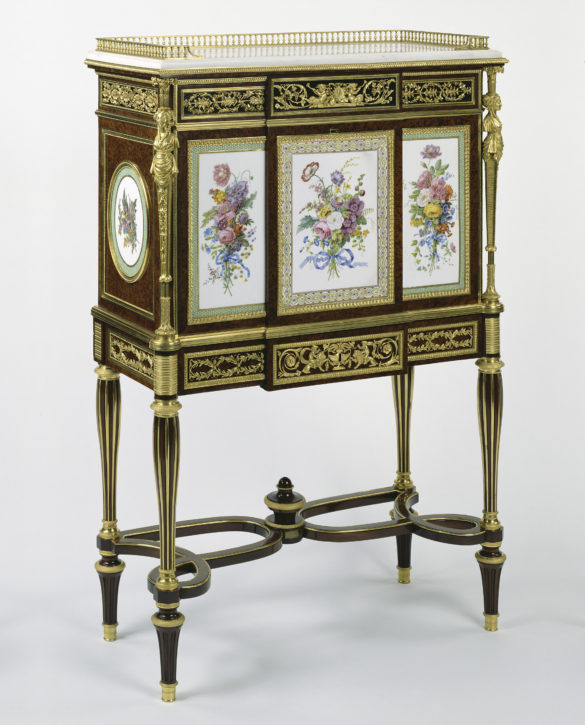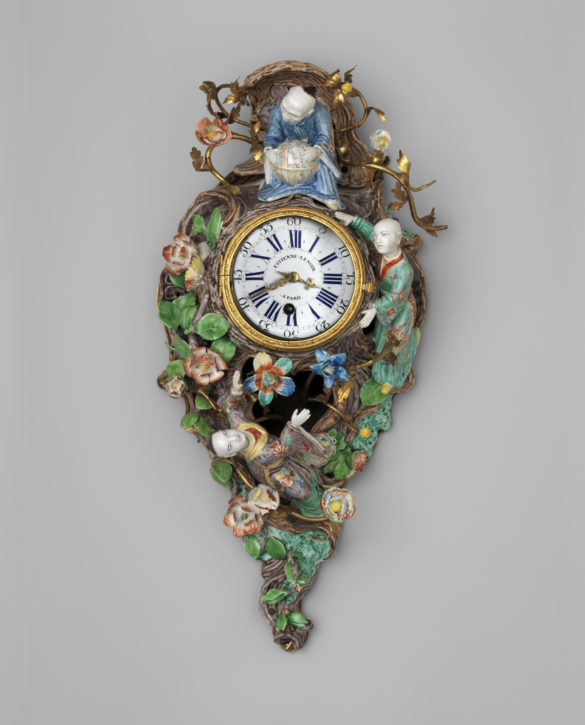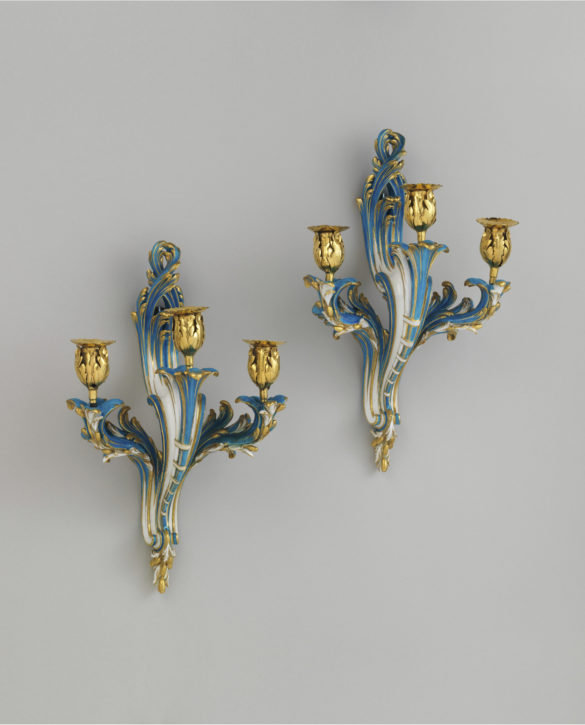CARLIN
Bonheur du Jour
Simon-Philippe Poirier (c. 1720-85) was among the leading marchands-merciers. He specialised in creating furniture mounted with porcelain plaques such as this writing desk or bonheur du jour. There are eleven known examples of this model, seven signed by the cabinetmaker Martin Carlin who was born in Germany but who worked in France from 1759. One was bought by Madame du Barry, mistress of Louis XV, for her apartments at Versailles. The date letters on this example on the porcelain show that it was made between 1768 and 1774.
Sèvres porcelain-mounted bonheur du jour. (Bowes Museum, Barnard Castle, Co, Durham, Inv. no. 1985.4/FW)




